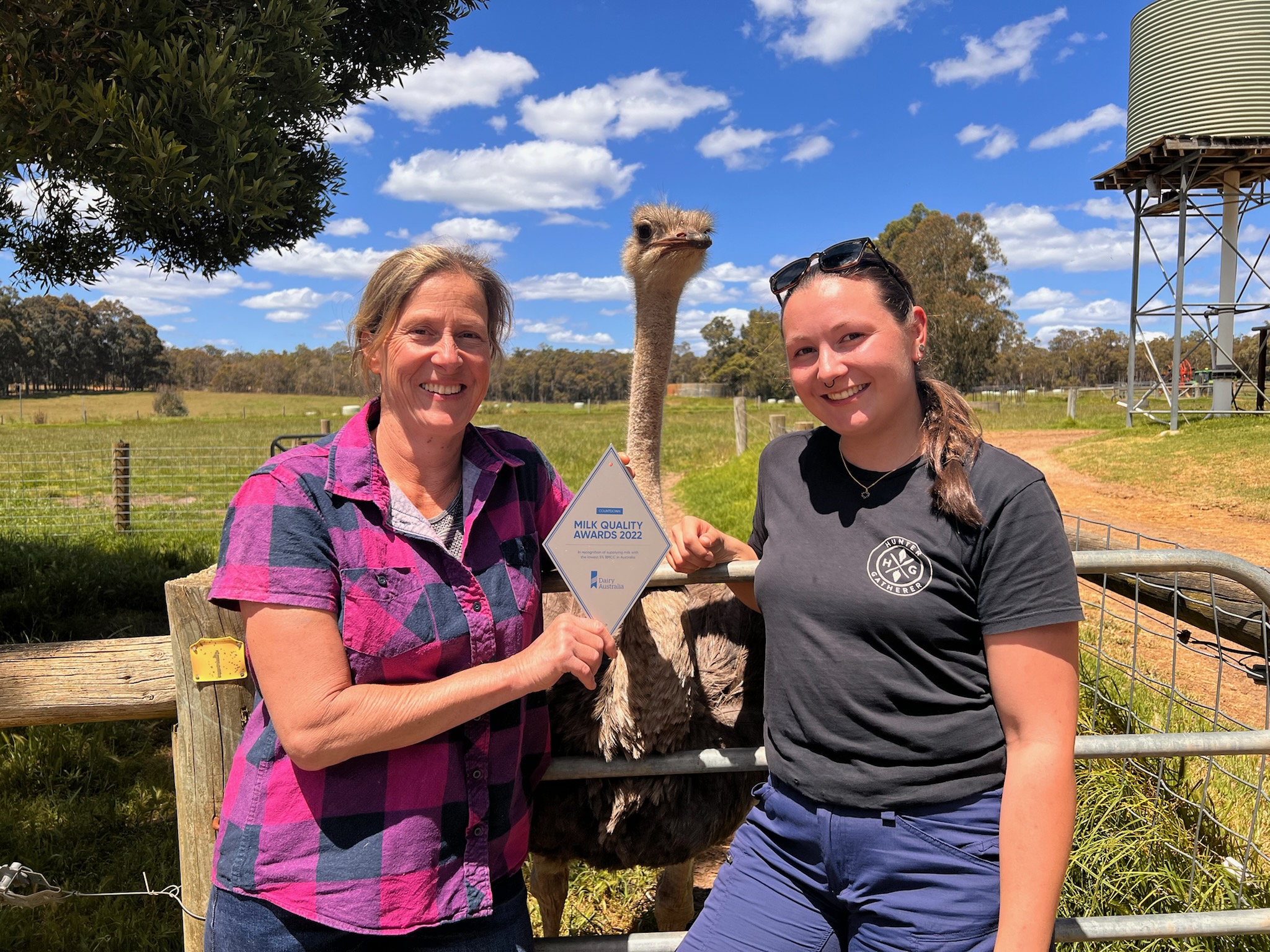Tools guide breeding and retention moves in Western Australia
Rodney and Nicole May
Region: Western Australia
Topic: Genomic testing
A Western Australian dairy farming family is using genomic information to bolster herd data and make better farm decisions.
Rodney and Nicole May, Brantina Farm, took their first genomic samples three years ago.
Driven by a need to gather more objective information about their heifers, the Cowaramup dairy farmers decided to embrace the industry science and marry it with their previous decision-making tools.

When deciding which heifers to keep and which to export, Nicole May and employee Sarah Grosse-Gehling consider genomics results and the performance of their dam.
“Before we started using genomics, we’d look at each heifer’s mother and keep the calves out for the cows we liked, that were good,” Nicole said.
“It was a bit of a guessing game, so when we started using Holstein sexed semen and got more heifers it was good to use their DNA to decide which ones to keep and which ones to export.”
“We still look at their mothers and their history, we don’t just rely on genomics, but it’s another tool to help us select heifers.”
The May family, along with their worker Sarah Grosse- Gehling and son Justin – who works on the farm when he has time-off from his job in the Northern Territory – milk up to 240 cows.
Three quarters of the predominantly Holstein herd calves from January through to the end of May, with the rest calving by the end of October.
The pasture-based operation is supplemented with silage in the paddock during summer and into autumn with grain in the dairy.
It’s only early days in the Mays’ genomic journey, but they plan to use this information to accompany their Easy Dairy records and input the data into their breeding program to assist with joining decisions.
Rodney and Nicole have been using Easy Dairy for 17 years and it was important for them for all their data to work together to inform day-to-day decision making.
DataGene’s Balanced Performance Index (BPI) is the first metric Nicole looks for when she receives the spreadsheet of genomic results.
The highest BPI animals are the ones they retain. She also looks at each heifer’s milk, protein and fat.
Genomic testing has been completed when calves are disbudded and vaccinated, but occasionally – when there’s a large group – Nicole said they like to just focus on the task of obtaining a clean DNA sample from the calves.
She said they usually tackle the job of genomic sampling with two people, to ensure the tissue sample and the paperwork are correct.
Nicole and Rodney also use DataGene’s Good Bulls Apps to research prospective sires.
Like the traits they look for in their heifer genomic results – determining the ones they are going to retain on farm – the couple also concentrate on production when it comes to selecting bulls but also add in specific health and fertility traits into their breeding criteria.
For example, they have won many Countdown Downunder awards – recognising the quality of their milk – so breeding cows that aren’t as susceptible to mastitis and have good udders is important.
Rodney also places a huge emphasis on feet and legs. He said this trait is crucial to ensure cows can walk to and from the paddock and dairy efficiently.
Working with their Farmwest breeding advisor Paul Kersten, Rodney and Nicole take the shortlist of bulls he provides and use the Good Bulls App to dig deeper into their pedigree.
“We really are looking for a bit of everything with our breeding,” Rodney said.
“Health is really important and usually production comes with the modern bulls and then feet are critical, if a cow can’t walk, she’s no good.”
Rodney and Nicole use a combination of genomic and proven bulls in their breeding program.
They like using genomics to identify younger bulls for use in artificial insemination programs and using the Good Bulls App as a simple way to search their pedigree.
“Businesses must be on top of their decision making around production and science helps with that,” Rodney said.
“It applies to growing pasture and breeding; with science it means we are no longer guessing.”
“Our inputs can be way too expensive to just guess what needs to be done.”


